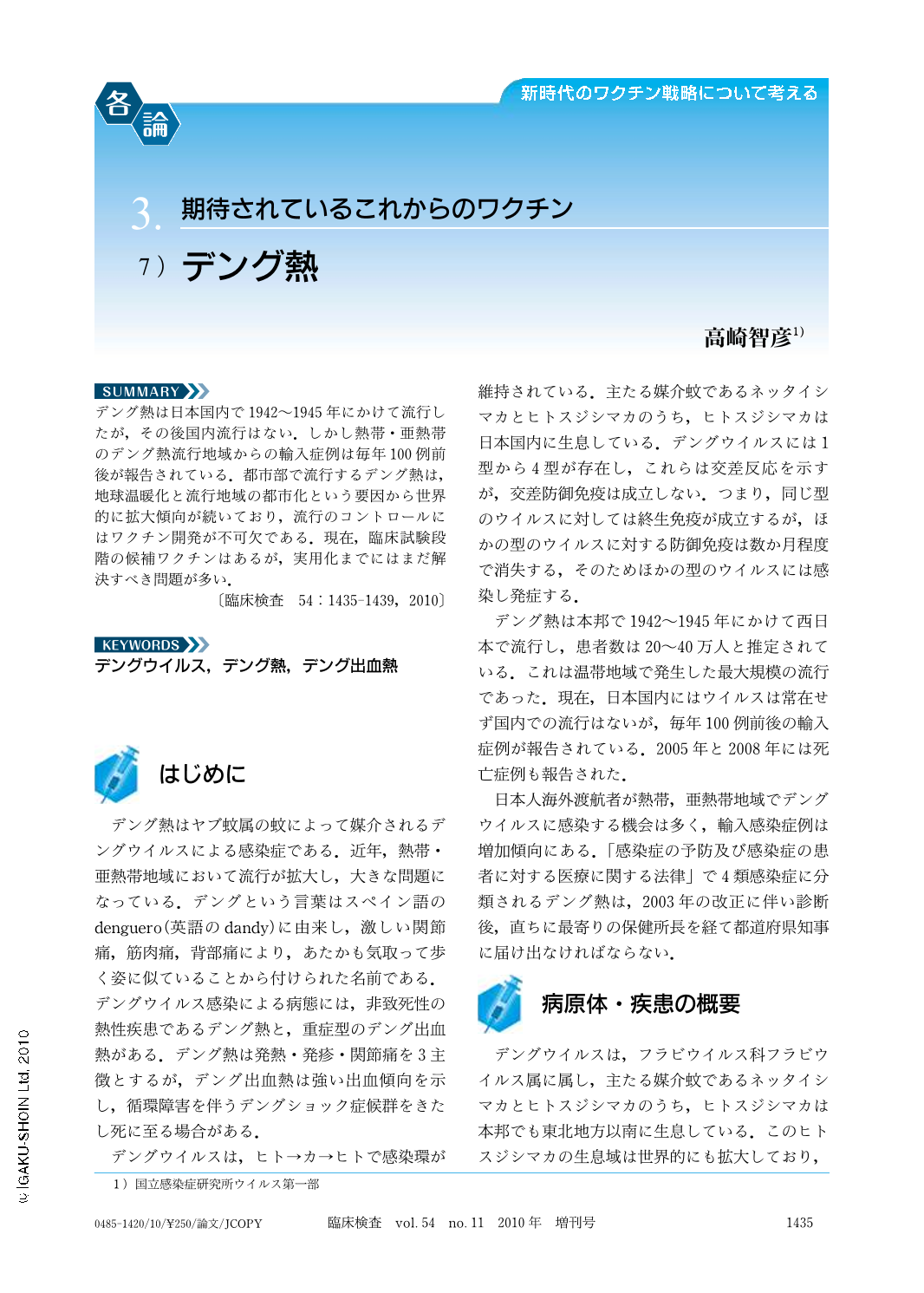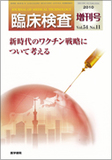Japanese
English
- 有料閲覧
- Abstract 文献概要
- 1ページ目 Look Inside
- 参考文献 Reference
デング熱は日本国内で1942~1945年にかけて流行したが,その後国内流行はない.しかし熱帯・亜熱帯のデング熱流行地域からの輸入症例は毎年100例前後が報告されている.都市部で流行するデング熱は,地球温暖化と流行地域の都市化という要因から世界的に拡大傾向が続いており,流行のコントロールにはワクチン開発が不可欠である.現在,臨床試験段階の候補ワクチンはあるが,実用化までにはまだ解決すべき問題が多い.
No dengue epidemic has yet been reported in Japan after World War II, but imported cases numbered about 100 cases per year because of the increase in Japanese tourists traveling to endemic tropical and subtropical areas. Dense urban overpopulation due economic growth also provides breeding sites the mosquito-human-mosquito transmission cycle because the vector lives in urban area. Live attenuated dengue vaccines have been developed for their inexpensiveness because of economic conditions in the epidemic developing countries. There are four dengue virus types, and vaccine developed against one type works only poorly against another type, with inadequate vaccine use increasing the risk of hemorrhage and shock syndrome when the infection reemerges. A vaccine must induce antibodies effective against all four types, which has greatly retarded vaccine development. Pediatric vaccination must provide at least antibodies effective against all 4 types to get consent from guardians. There are problems in where the clinical trials can be conducted. Laboratory diagnosis and surveillance systems should be established there. Another problem is whether the vaccine targets dengue fever or dengue hemorrhagic fever.

Copyright © 2010, Igaku-Shoin Ltd. All rights reserved.


